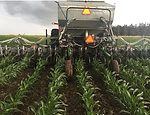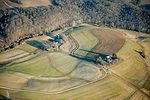Soil Health
Fulfilling a Soil Health Promise with Strategic Strip-Till, Cover Cropping
Iowa’s Jack Boyer uses cover crops to build soil for his Century Farm’s seed corn and soybean production, and reaps the benefits of additional nitrogen they add to his fields.
Read More
[Podcast] Strategic Strip-Tilling with Cover Crops
Strip tilling with cover crops is taking off in many regions of the U.S. and is relatively inexpensive. Seeding cover crops can occur during fall strip-tilling but comes with its own challenges in the spring.
Read More
What to Do if You Can't Plant a Cash Crop
A bare field is a vulnerable field, subject to losing its valuable, nutrient-rich layer of topsoil because wind can blow the topsoil away and rain can wash it away.
Read More
The Connection Between Flooding & Farming Methods
Scientists say there's a way to at least decrease the amount of damage natural disasters can do and it all starts in the farm fields.
Read More





